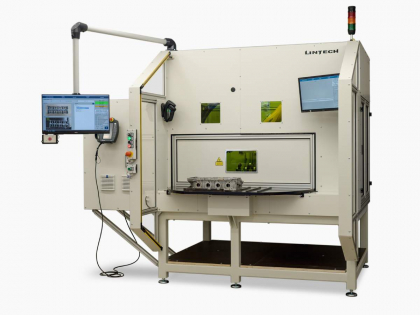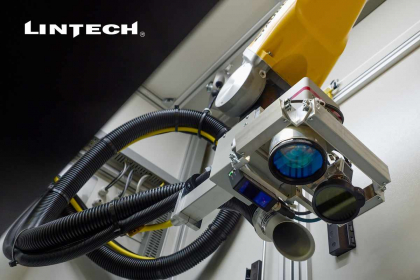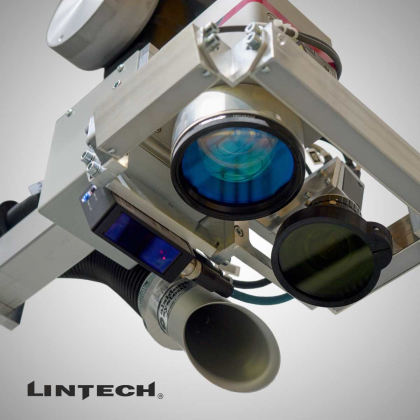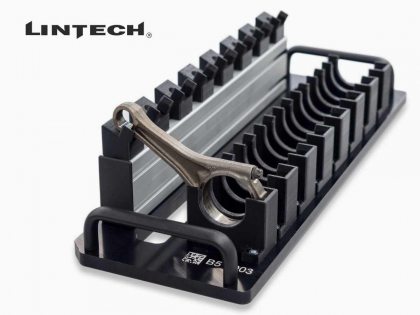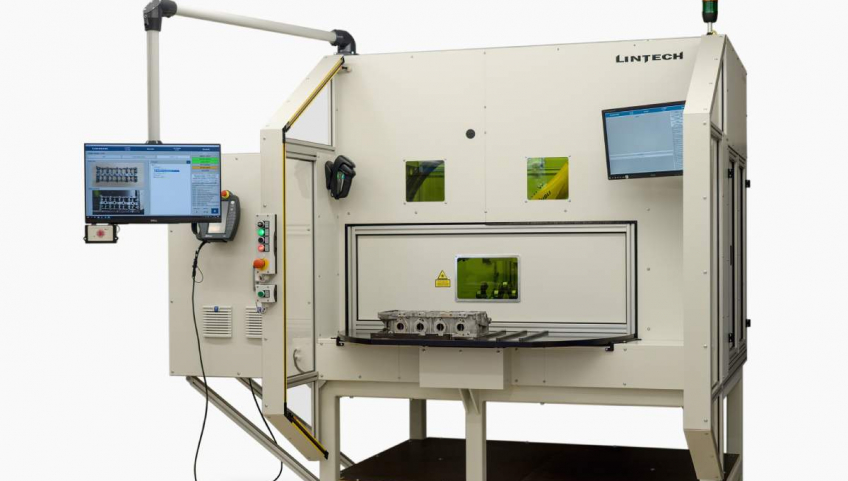
CASE STUDY: multi-purpose laser device for remarking
Approximately in the middle of 2020, we were approached by ZF Automotive Czech s.r.o. regarding the project of laser re-marking of motor components. The task itself was challenging. From the point of view of laser application it is necessary to rewrite the original marking, the form of which may differ and especially this principle of processing to subsequently apply to hundreds of different components in different designs.
The range of processed components is really large and at the same time very varied. The individual components are different not only in physical size, weight, material, but also in the position of the original marking.
As part of a preparatory study our LINTECH experts managed to design a complex solution in the form of a sophisticated laser robotic workplace that meets all the above requirements.
Thanks to the high technical level and the high degree of versatility of this solution we succeeded in tender against the competition and proceeded to the implementation of the project.
First of all, it is necessary to mention the technical equipment of the station.
- Stäubli TX2-90L robotic arm
- LLS-F70P laser system located on the robot's wrist
- Cameras:
- The first camera is stationary in the machine and detects the inner position of the turntable
- The second camera, together with the laser, is directly on the robot's wrist
- Distance sensor also located directly on the robot's wrist
The laser machine was designed to be as simple as possible so it could be controlled by practically anyone based on common intuition. At the same time, several control mechanisms were applied, which immediately find out any errors of the operator and in some cases automatically correct it.
The working sequences of the machine are:
The operator places the part on the turntable in the jig and reads the barcode from the enclosed production order with a hand-held wireless reader.
Based on the information from the production order the custom application LinMARK automatically selects
- Robot trajectories
- Reading parameters for the camera on the robot
- Laser marking job
After turning the table initiated by the operator (moving the part into the machine):
- Stationary camera first
- Checks from the production order if the loaded part corresponds to what was loaded
- finds out the location of the product and sends its position to the correction of the robot position (within a certain limit range)
- If OK, the robot moves according to the pre-set trajectory to the desired location affected by the correction
- And another check follows
- The camera on the robot checks the position of the original DMC and, if necessary, makes a correction of the position of the new marking
- The distance sensor checks whether the laser is at the correct distance from the marking surface (focal length), or a correction is made
- If this check is OK, the original DMC code will be overwritten by the new one
- Data to the new DMC will be obtained by the LinMARK application from the parent database, the device also allows manual data entry (currently used for test sets)
- Finally, the camera on the robot performs a final check of the newly marked DMC and the necessary data is sent to the database.
What is the LinMARK?
A key role for the functionality of such a complex device, in which it is necessary to combine the control of several elements, is played by our custom-made LinMARK user application. This is due to communication with the laser SW operated on the Windows platform.
It is the main user interface of the device and provides convenient work with production data. Displays:
- PLC states
- provides communication and control of the camera system
- communicates with the robot through trajectories
- works with a local database in which process information is stored
- communicates with the superior system
Although the main control element is a PLC, the LinMARK application (developed in C #) allows you to work with complex data structures which the robot's trajectories for products whose final number is not completely known in advance undoubtedly are due to the need to use dynamically growing data space.
LinMARK is also a very important part from a perspective of fault detection - it logs all the work of the device and thus enables the analysis of historical machine events.
In this case the graphical interface of the application is designed for use with two monitors:
- main, control, which displays information about the product allows it to select and work with production data
- informative used to display current images of the camera system, process states and steps
This graphical environment is always designed with an emphasis on the specific location of the monitor relative to the operator and maximizing user friendliness based on many years of experience, modern elements known from for example mobile phones and customer requirements.

